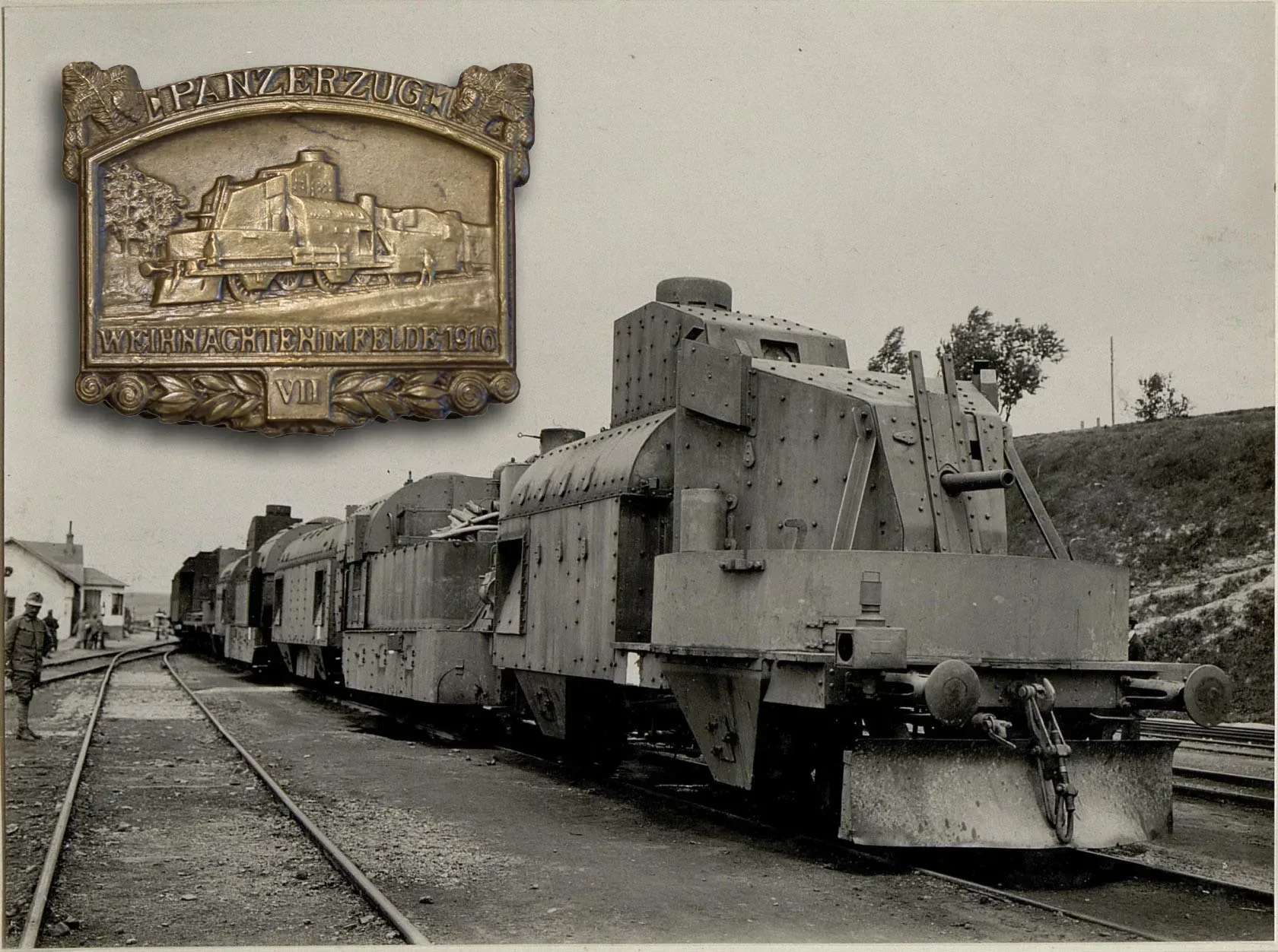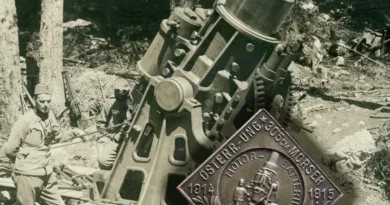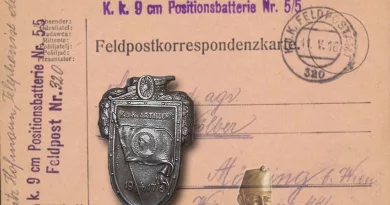Armored train
In the Great War, armored trains were used primarily on the eastern battlefield. The first assemblies were built by the Russians back in 1912 and were successfully used in Galicia against German and Austro-Hungarian troops. Following the Russian example, the Monarchy also began to build similar ones. The first three makeshift trains made of materials found on site were completed in 1914. Afterwards nine more assemblies have been made in the hinterland.

The light trains consisted of an armored locomotive and two cars with machine guns connected in front and behind it. Of these, six were built at the turn of 1914-15. The heavy trains had two locomotives. In between of these was a machine-gun command carriage, and at the beginning and end of the train was a gun carriage. A 7 cm marine cannon was placed in rotating turrets. There was also a machine gun assembled on each side. Communication between the cars was via an internal telephone line. Three such heavy armored trains were built in the Monarchy (serial numbers VII, VIII, and IX). On the IX. train there was one cannon car, a locomotive and two machine gun wagons. Later, for safety reasons, a flat car was also set up at the front of the train as protection against undermining the railway track. On other occasions, a flat car equipped with anti aircraft MGs were attached, especially to trains used on the Italian front. Additional passenger (resident) and freight wagons were also connected to the armored trains on the way, which were switched off before battles. The light trains also received various types of gun carriages in 1916, thus, only one light MG train remained in use.

There were four Kappenabzeichen depicting armored trains. The opening picture shows one of the most beautiful. The photo shows either VII or VIII heavy armored train at Zborów station in 1916. In the foreground is the cannon carriage, at the end of the assembly are the caravans. There is the same train on another similar badge in the Art Nouveau frame made without serial number. The third badge with the same train design adorns the inscription IV. This was an obvious mistake, as train no. IV was a light unit without a cannon carriage. It’s like it appears on a contemporary field postcard. Later in 1916 this train received one of the gun carriages of train VII, but that car was not attached immediately after the locomotive, as is shown on the badge.

There was also a fourth ARKANZAS-made badge titled “Armored Train in Battle,” but it featured only a stylized image of an armored train.




